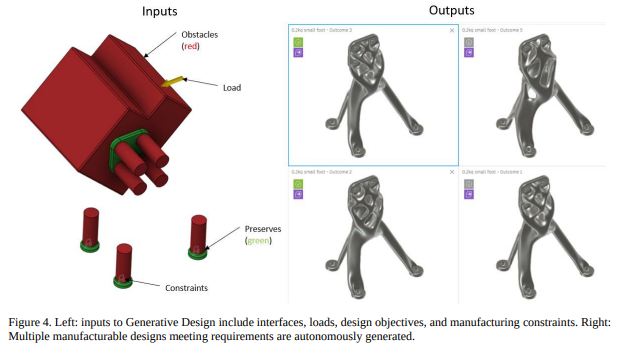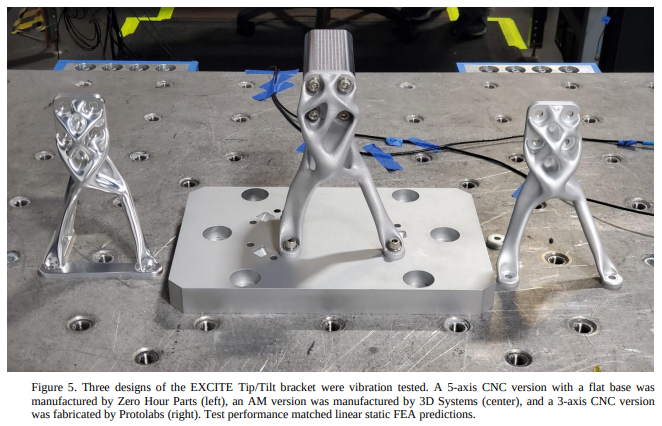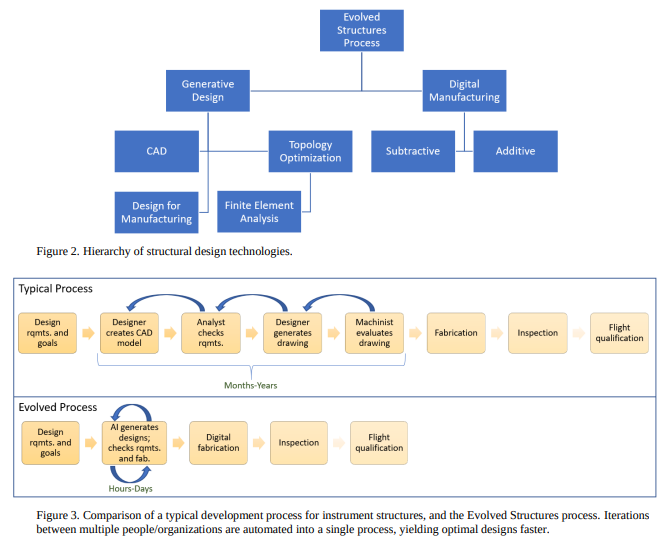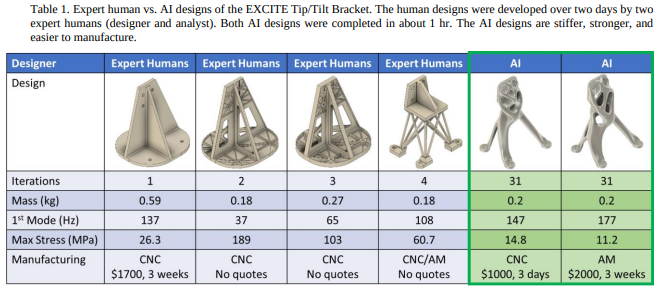In a paper published by the NASA Goddard Space Flight Center, “Generative Design and Digital Manufacturing: Using AI and robots to build lightweight instruments” [PDF] NASA research engineer Ryan McClelland describes the Evolved Structures project which is exploring the use of artificial intelligence in designing structures and digital manufacturing technologies (such as computer numerically controlled machining (CNC) and additive manufacturing (AM, “3D printing”) to fabricate lightweight, high performance structures for air- and spacecraft. Here is the abstract.
Digital Engineering technologies are transforming long-stagnant development processes by applying the tremendous advancements in Information Technology (IT) to classical engineering tasks such as design, analysis, and fabrication of space-flight instrument structures. Generative Design leverages developments in Artificial Intelligence (AI) and Cloud computing to enable a paradigm shift in the design process, allowing the engineer to focus on defining the requirements and objectives of the design while AI generates optimized designs which comply with the input requirements. Digital Manufacturing allows these complex lightweight designs to be efficiently manufactured by directly fabricating from the resulting 3D models. The development of these two Digital Engineering technologies realizes significant mass savings while simultaneously reducing structure development time from months to days. This paper describes the development of the Evolved Structures process applying these technologies to spaceflight optical instrument structures including an example demonstrating greater than 10x reduction in development time/cost and greater than 3x improvement in structural performance.
An experiment comparing the conventional human engineering process with artificial intelligence generative design was performed with a component for the EXCITE balloon mission, which is intended to obtain spectra of exoplanets, the Tip/Tilt bracket, with requirements as follows:
- Interface to Tip/Tilt assembly bolt pattern (4x ¼ -20 bolts)
- Interface to back of telescope (3x ¼-20 bolts)
- Avoid interfering with Tip/Tilt assembly or associated light paths
- Survive chute-shock maximum loads; 10g vertical (x), 3g lateral (y and z) applied to 1.35 kg Tip/Tilt assembly.
- First mode >100 Hz to avoid cryo-cooler excitation
- Bracket mass target 0.2 kg
The problem was presented to a design engineer and structural analyst who developed CAD models, tested them with finite element analysis, and evaluated their manufacturability. This process went through four iterations optimising the design. The same requirements were input to Autodesk Fusion 360 Generative Design Extension, which produced two designs in 31 iterations, one intended for manufacturing by CNC machine tools, and another for fabrication by AM.
As shown in Table 1, the AI designs are superior to the expert human designs in every respect. Only the first iteration of the human designs was readily manufacturable, though the second and third iterations could be made manufacturable by adjusting the pocket designs. The AI designs were both readily fabricated; see Figure 5 for photos of the hardware under test. Excluding the unmanufacturable fourth human iteration, the stiffness/mass ratio of the AI designs is >3x better (240 Hz/kg for the third human iteration vs. 740 Hz/kg for the AI-CNC design and 885 Hz/kg for the AI-AM design). The maximum stress of the AI designs is also reduced by 7x for the AI-CNC design and 9x reduced for the AI-AM design. Performance improvements of these magnitudes are rarely seen in the field of mechanical design. Most impactful however is the speed with which the designs were completed. The human designs took two days of effort by two engineers. The AI design took about 30 minutes of effort from one engineer to encode the requirements and about 1 hour of effort from the Generative Design AI, demonstrating an order-of-magnitude improvement in development time/cost.
Here are the inputs and outputs of the Generative Design process.

These are three actual parts fabricated from the AI design, two by CNC machining and one by additive manufacturing. All matched finite element modeling predictions and met specifications.

NASA have released a popular article about this work, “NASA Turns to AI to Design Mission Hardware”.
Here is a half hour NASA podcast interview with Ryan McClelland, “Evolved Structures”.

